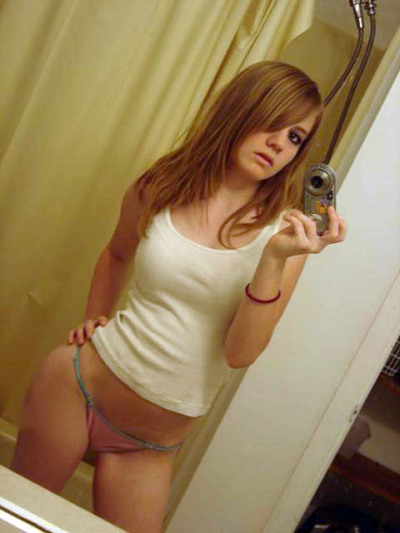There are a lot of different ways for people to express themselves. Of course, not everybody has the time and resources to create a giant marble statue or write a series of novels. For most people, self-expression can be a matter as simple as putting on a particular kind of shirt, or wearing an interesting hat. For some people, self-assertion can go a little further than simply accessorizing and can be a little more... permanent.
Part of the appeal of body art like tattoos and body piercings, is that they can declare a person's sense of identity and point of view, even when they're going au natural. Between these two forms of body art, more people tend to do body piercing than tattoos though; especially since piercings are usually easy to do than tattoos.
As far as the question of how to take care of body piercing is concerned, barring infections or any other kinds of problems, it's usually pretty easy. The body piercing side effects, on the other hand, can range from completely negligible, to excruciatingly painful. Of course, these depend on where the piercing will be located.
If you're willing to take the pain that can come with piercing and the subsequent healing process, you can have piercings just about anywhere in the body. You can even have your genitals pierced; if that's the way you want to express yourself.
Not very many people in Westernized societies are inclined to do this, but those who do often claim that the pierced erm... areas enjoy enhanced sensitivity and that the sexual experience is improved.
Uh. OK.
It might be worth it for some people, but for a lot of others, the unbelievable pain that, say, a Prince Albert or an Isabella might involve, simply doesn't have enough of a payoff to make up for the horror of having your sensitive bits get stabbed through with a needle or a piercing gun. And that doesn't even take into account the recovery periods that these piercings require.
On the issue of how to take care of body piercings in these places, a Prince Albert, which is a piercing through the head of a man's... man-bits, has a healing period of two to four weeks. The Isabella piercing, which goes through the shaft of a woman's clitoris, has one that is two to three months long.
Of course, there are a lot of other, less sensitive places to get piercings.
The most common and socially acceptable places for people -women in particular- to get piercings are on the lower lobes of the ears. These spots are pretty easy to take care of, and since ear lobes are mostly fatty tissue with hardly any nerve endings anyway, they hardly hurt at all, once the deed has been done. Other common places to get body piercings are on the nostril, the lip, belly button, and eyebrows.
Regardless of where you want to puncture that hole in your anatomy, once the deed is done, you will have to watch out for body piercing side effects, like the swelling that might initially happen during the healing process.
When you get pierced, usually, to make sure that the hole created by the needle or gun keeps, a piece of jewelry is placed there to make sure that the piercing keeps. This piece of jewelry is normally a stud or a barbell, which you may have to get replaced every now and then, especially if the area around the piercing swells too much.
Once your piercing starts healing, a white or yellowish discharge might show up on your jewelry. If there isn't too much pain or swelling, you don't have to worry; this is a normal part of the healing process. If there's a lot of pain, and the area swells up a lot though, you might have an infection on your hands, and when this happens, it's a good idea to get it checked by a doctor.
To keep infections and other problems, like blood-transmitted diseases, from happening, make sure that you get pierced by a professional who uses sterile instruments and practices good hygiene. You'll also want to make sure that your piercing heals properly by keeping it clean with soap and water (never alcohol or hydrogen peroxide; these may kill germs, but they dry out the skin and slow down the healing process, too) and taking zinc and iron supplements, which will help your body heal more quickly.
Wherever you get your piercing; be it as innocuous as pierced ear lobes to something as radical as an Isabella, you will still always have to be careful so that you won't have to suffer through body piercing side effects like infection, excessive swelling, or allergic reactions. You will have to learn how to take care of body piercings.
By Jayna Davis












 Girls, Cameras and Mirrors
Girls, Cameras and Mirrors
 Girls, Cameras and Mirrors
Girls, Cameras and Mirrors
 Girls, Cameras and Mirrors
Girls, Cameras and Mirrors
 Girls, Cameras and Mirrors
Girls, Cameras and Mirrors
 Girls, Cameras and Mirrors
Girls, Cameras and Mirrors
 Girls, Cameras and Mirrors
Girls, Cameras and Mirrors
 Girls, Cameras and Mirrors
Girls, Cameras and Mirrors
 Girls, Cameras and Mirrors
Girls, Cameras and Mirrors

 Beautiful Denise Milani Facebook Pictures | Barnorama
Beautiful Denise Milani Facebook Pictures | Barnorama
 Beautiful Denise Milani Facebook Pictures | Barnorama
Beautiful Denise Milani Facebook Pictures | Barnorama
 Beautiful Denise Milani Facebook Pictures | Barnorama
Beautiful Denise Milani Facebook Pictures | Barnorama
 Beautiful Denise Milani Facebook Pictures | Barnorama
Beautiful Denise Milani Facebook Pictures | Barnorama
 Beautiful Denise Milani Facebook Pictures | Barnorama
Beautiful Denise Milani Facebook Pictures | Barnorama
 Beautiful Denise Milani Facebook Pictures | Barnorama
Beautiful Denise Milani Facebook Pictures | Barnorama
 Beautiful Denise Milani Facebook Pictures | Barnorama
Beautiful Denise Milani Facebook Pictures | Barnorama
 Beautiful Denise Milani Facebook Pictures | Barnorama
Beautiful Denise Milani Facebook Pictures | Barnorama
 Beautiful Denise Milani Facebook Pictures | Barnorama
Beautiful Denise Milani Facebook Pictures | Barnorama
 Beautiful Denise Milani Facebook Pictures | Barnorama
Beautiful Denise Milani Facebook Pictures | Barnorama
 Beautiful Denise Milani Facebook Pictures | Barnorama
Beautiful Denise Milani Facebook Pictures | Barnorama
 Beautiful Denise Milani Facebook Pictures | Barnorama
Beautiful Denise Milani Facebook Pictures | Barnorama
 Beautiful Denise Milani Facebook Pictures | Barnorama
Beautiful Denise Milani Facebook Pictures | Barnorama
 Beautiful Denise Milani Facebook Pictures | Barnorama
Beautiful Denise Milani Facebook Pictures | Barnorama
 Beautiful Denise Milani Facebook Pictures | Barnorama
Beautiful Denise Milani Facebook Pictures | Barnorama
 Beautiful Denise Milani Facebook Pictures | Barnorama
Beautiful Denise Milani Facebook Pictures | Barnorama
 Beautiful Denise Milani Facebook Pictures | Barnorama
Beautiful Denise Milani Facebook Pictures | Barnorama
 Beautiful Denise Milani Facebook Pictures | Barnorama
Beautiful Denise Milani Facebook Pictures | Barnorama
 Beautiful Denise Milani Facebook Pictures | Barnorama
Beautiful Denise Milani Facebook Pictures | Barnorama

 Salwar Kameez Fashion Collection
Salwar Kameez Fashion Collection
 Salwar Kameez Fashion Collection
Salwar Kameez Fashion Collection
 Salwar Kameez Fashion Collection
Salwar Kameez Fashion Collection
 Salwar Kameez Fashion Collection
Salwar Kameez Fashion Collection
 Salwar Kameez Fashion Collection
Salwar Kameez Fashion Collection
 Salwar Kameez Fashion Collection
Salwar Kameez Fashion Collection
 Salwar Kameez Fashion Collection
Salwar Kameez Fashion Collection
 Salwar Kameez Fashion Collection
Salwar Kameez Fashion Collection
 Salwar Kameez Fashion Collection
Salwar Kameez Fashion Collection
 Salwar Kameez Fashion Collection
Salwar Kameez Fashion Collection



